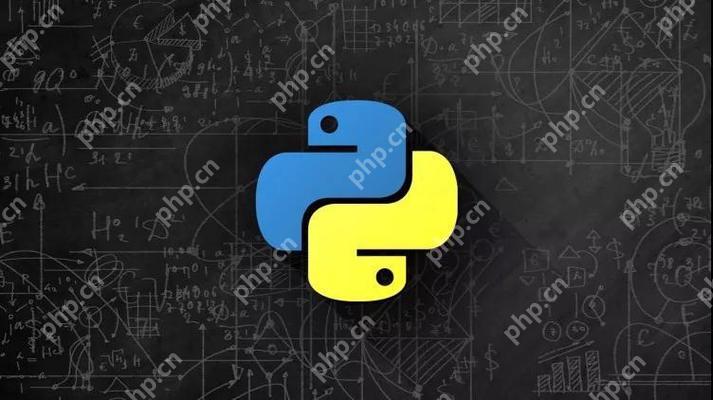观察者模式在python中通过定义主题和观察者类来实现。1) 创建subject类管理观察者列表,提供附加、移除和通知方法。2) 定义observer类及其子类concreteobserver,实现update方法。3) 使用时,观察者订阅主题,主题状态变化时通知所有观察者。这种模式促进松耦合设计,但需注意内存泄漏和性能问题。

观察者模式在Python中如何实现?这是一个非常有趣的问题,尤其是在需要构建事件驱动系统或需要松耦合设计时,观察者模式显得尤为重要。让我从一个简单的实现开始,然后深入探讨这个模式的细节和应用场景。
在Python中实现观察者模式的核心思想是定义一种一对多的依赖关系,让多个观察者对象同时监听某一个主题对象。这个主题对象在状态发生变化时,会通知所有注册的观察者。让我们从一个基本的实现开始:
class Subject:
def __init__(self):
self._observers = []
def attach(self, observer):
if observer not in self._observers:
self._observers.append(observer)
def detach(self, observer):
try:
self._observers.remove(observer)
except ValueError:
pass
def notify(self):
for observer in self._observers:
observer.update(self)
class Observer:
def update(self, subject):
pass
class ConcreteObserver(Observer):
def update(self, subject):
print(f"Observer {id(self)} got notified by {subject.__class__.__name__}")这个实现虽然简单,但它捕捉了观察者模式的本质。主题类Subject维护了一个观察者列表,并提供了附加和移除观察者的方法。notify方法则遍历所有观察者,调用它们的update方法。
立即学习“Python免费学习笔记(深入)”;
但为什么要用观察者模式呢?观察者模式的最大优势在于它促进了松耦合。主题和观察者之间没有直接引用,主题只需要知道它需要通知某个对象,而不需要知道这个对象是谁或它做了什么。这在设计大型系统时非常有用,因为它允许我们独立地改变或替换主题和观察者,而不影响对方。
然而,观察者模式也有一些潜在的缺点和需要注意的地方。首先,可能会导致内存泄漏。如果观察者没有正确地从主题中移除,那么即使观察者不再需要,它仍然会被主题引用,从而无法被垃圾回收。其次,如果有大量的观察者,每次状态变化时都需要通知所有观察者,这可能会影响性能。
在实际应用中,我们可以对这个基本实现进行一些优化和扩展。例如,可以引入事件过滤器,让主题只通知感兴趣的事件;或者使用弱引用(weakref)来防止内存泄漏。
让我们看一个更实际的例子,假设我们正在构建一个天气预报系统,用户可以订阅不同的天气事件:
import weakref
class WeatherStation:
def __init__(self):
self._observers = weakref.WeakSet()
self._temperature = None
def attach(self, observer):
self._observers.add(observer)
def detach(self, observer):
self._observers.discard(observer)
def set_temperature(self, temperature):
self._temperature = temperature
self.notify()
def notify(self):
for observer in self._observers:
observer.update(self)
class TemperatureObserver:
def update(self, subject):
if isinstance(subject, WeatherStation):
print(f"Temperature updated to {subject._temperature}°C")
class AlertObserver:
def __init__(self, threshold):
self.threshold = threshold
def update(self, subject):
if isinstance(subject, WeatherStation) and subject._temperature > self.threshold:
print(f"Alert: Temperature exceeded {self.threshold}°C!")
# 使用示例
weather_station = WeatherStation()
temp_observer = TemperatureObserver()
alert_observer = AlertObserver(threshold=30)
weather_station.attach(temp_observer)
weather_station.attach(alert_observer)
weather_station.set_temperature(25) # 输出: Temperature updated to 25°C
weather_station.set_temperature(35) # 输出: Temperature updated to 35°C 和 Alert: Temperature exceeded 30°C!在这个例子中,我们使用了weakref.WeakSet来存储观察者,这样可以防止内存泄漏。同时,我们引入了不同的观察者类型,一个用于普通温度更新,一个用于温度超过阈值的警报。
在实现观察者模式时,还有一些最佳实践值得注意。首先,应该确保通知方法是线程安全的,特别是在多线程环境下。其次,应该考虑观察者的顺序,有时通知顺序可能会影响结果。最后,应该提供一种方式让观察者可以选择性地接收通知,而不是每次都通知所有观察者。
总之,观察者模式在Python中非常容易实现,并且在需要事件驱动设计时非常有用。但在使用时,需要注意潜在的性能问题和内存管理,确保你的实现是高效且健壮的。
以上就是如何在Python中实现观察者模式?的详细内容,更多请关注php中文网其它相关文章!

每个人都需要一台速度更快、更稳定的 PC。随着时间的推移,垃圾文件、旧注册表数据和不必要的后台进程会占用资源并降低性能。幸运的是,许多工具可以让 Windows 保持平稳运行。

Copyright 2014-2025 https://www.php.cn/ All Rights Reserved | php.cn | 湘ICP备2023035733号